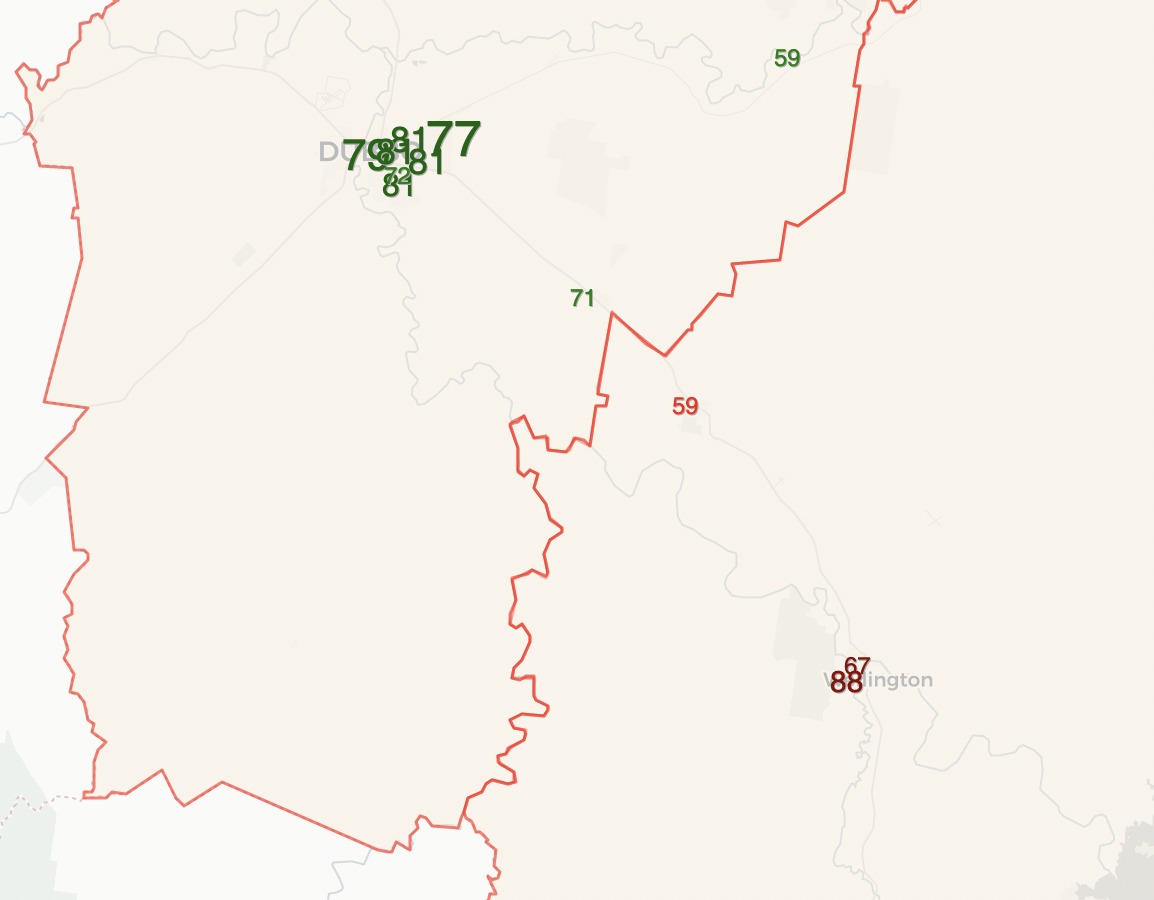One of the most interesting contests at the 2021 council elections was the referendum on abolishing the wards for Dubbo Regional Council.
The council was founded in 2016 as a merger of the old Dubbo council and its neighbour Wellington. Dubbo makes up the vast majority of the merged council, with Wellington very much the junior partner.
To ensure that Wellington had some guaranteed representation on the council, the council was split into five wards. The five-ward structure was common with newly created urban councils, but those councils had fifteen councillors. It seems that would have been too many for Dubbo, so instead they used the terrible two-councillor ward system.
I’ve written numerous times about the role of district magnitude in determining how representative an electoral system is. The two-member system tends to reduce representation, and even limits the range of options for voters to choose from. It particularly leads to uncontested elections in rural councils.
On my last podcast episode for 2021, my guest Osmond Chiu pointed out that Dubbo has a particularly Aboriginal population. Yet there is no Aboriginal councillors on the local council. Dividing a council up into small wards tend to result in more representatives for the majority and locks out minority groups.
As a solution to that terrible system, the council voted to switch to an unwarded system, while also adding an eleventh seat to the council. The Wellington councillors strongly objected to the motion but it passed.
Now we have results from the referendum. It passed overwhelmingly, with 74.6% voting in favour
When you divide the results between the former Dubbo and Wellington councils, you find an extremely sharp divide. 81.7% of votes in the old Dubbo LGA voted ‘yes’, while the ‘yes’ vote in Wellington was just 41.3%. About one fifth of the votes could not be geolocated (postal votes, iVotes and other declaration votes), but amongst the remainder Dubbo outnumbered Wellington four times over.
I’ve mapped out the election day booth results as follows:
All seven booths in the Dubbo urban area had a ‘yes’ vote over 70%, while the ‘no’ vote in the two Wellington area booths was 67% and 88%. The small number of rural booths around these two main towns were more varied.
I’m a supporter of abolishing wards in this scenario. If Wellington voters want to prioritise councillors from their local area, they will get elected. At least two of them. But those voters will be able to choose from the whole gamut of candidates across the council, and can prioritise other characteristics.
But while it is a good chance to the electoral system, it’s also a reminder of the harsh reality that numbers dominate when it comes to electoral politics. Once Wellington was merged with its much more populous neighbour, it would always come second.




I don’t understand why there should be such a discrepancy in election requirements in warded and unwarded councils. As a Greens candidate in Blacktown which is warded, I got 13.29% of the votes but was nowhere near getting elected with a quota of only 0.5316.
A colleague in Hawkesbury which is unwarded got elected with 6.21% which gave her a quota of .8074. In Campbelltown the Animal Justice Party candidate got elected with 4.37% which gave a quota of 0.6999.
How can there be such an undemocratic system in place in some councils which so strongly favours Labor and the Liberals ?
I think that’s a bit simplistic. I do think ward magnitude should be higher than three (ideal for me is at least five), but there is a trade-off, since higher magnitude does mean wards covering larger areas and less of a local connection to a small local area.
Lower magnitude systems favour whoever is stronger. It doesn’t help Labor in the Northern Beaches or the Liberal Party in the Inner West.
Perhaps Wellington should just demerge from Dubbo and go its own way. I was once a supporter of council amalgamations but now I realise that it makes things less democratic and combines areas that may not have common interests.
Agree Wilson, in Queensland they did a whole load of mergers several years ago around 2008-2010. A few years later, some rural councils were able to demerge, the most notable being Noosa which was forced to merge with two other councils to form Sunshine Coast council.
The only benefit of doing these council mergers is perhaps to prepare the Australian political system for a move towards a two tier model instead of the current three tier system.
Comments are closed.